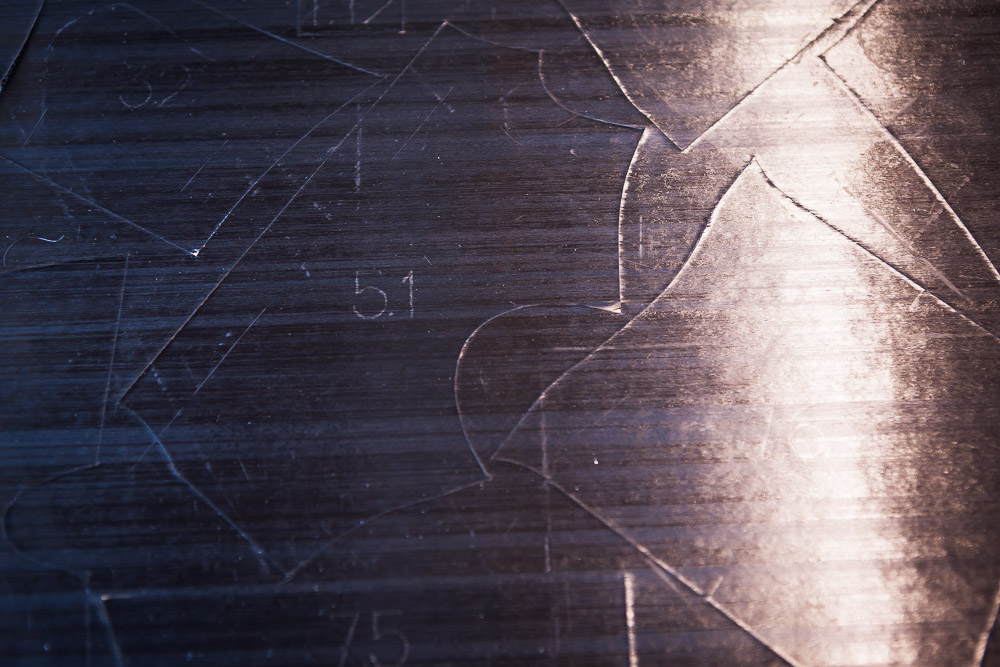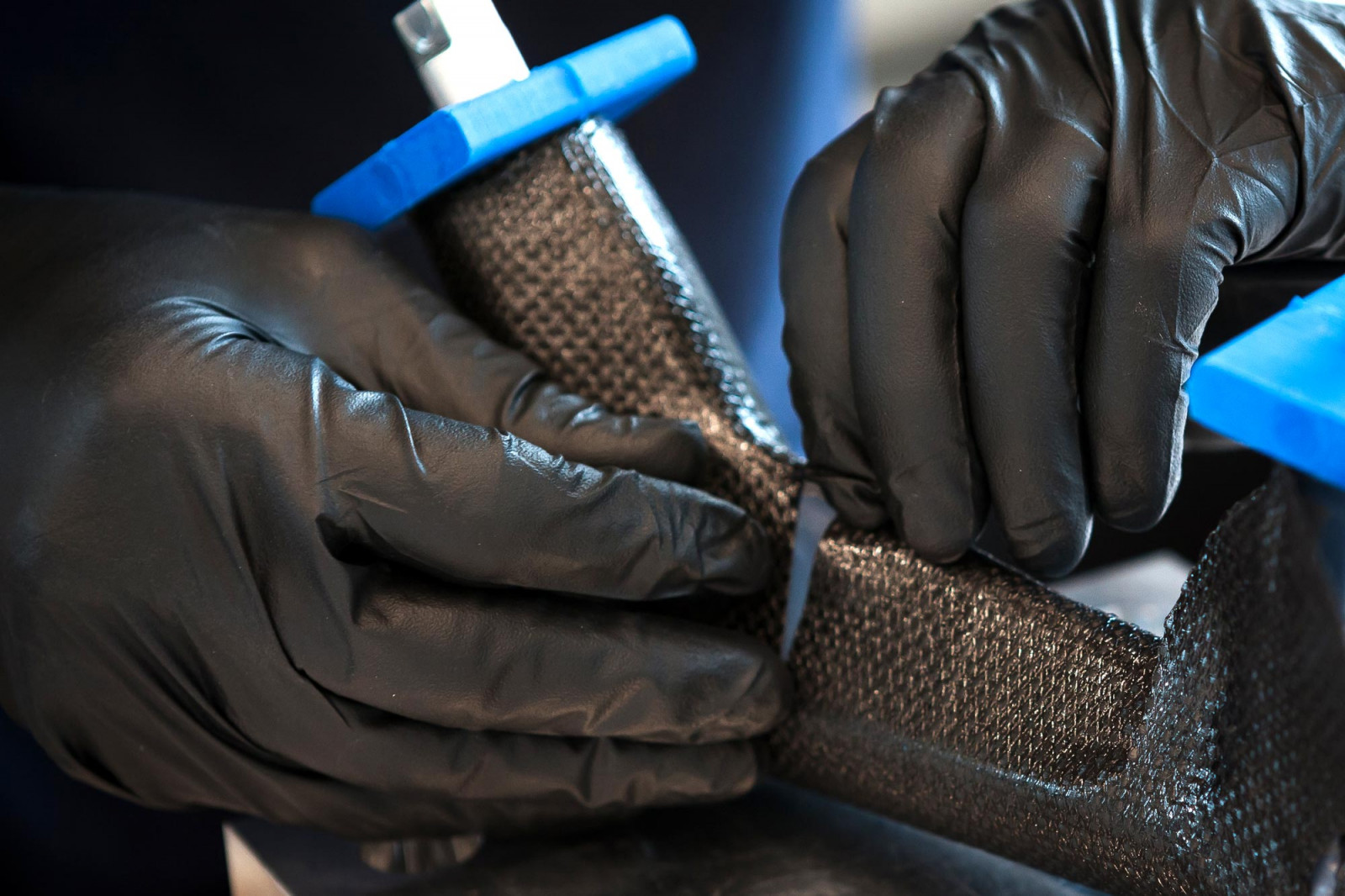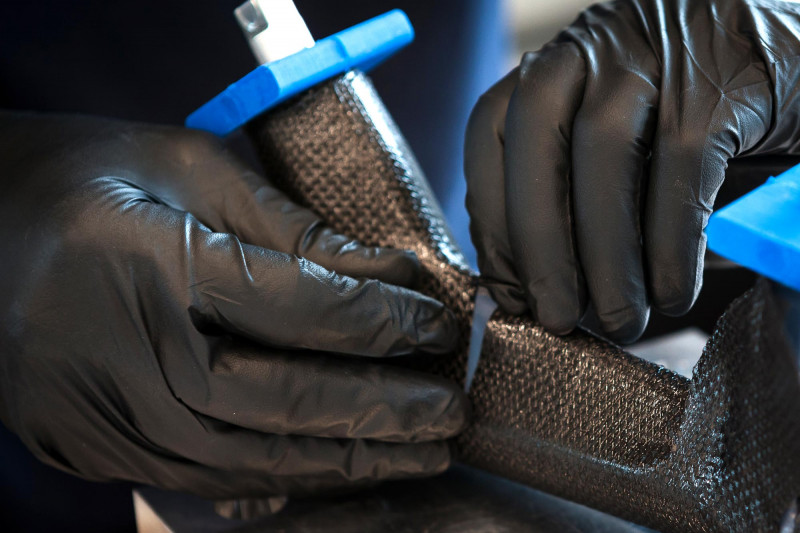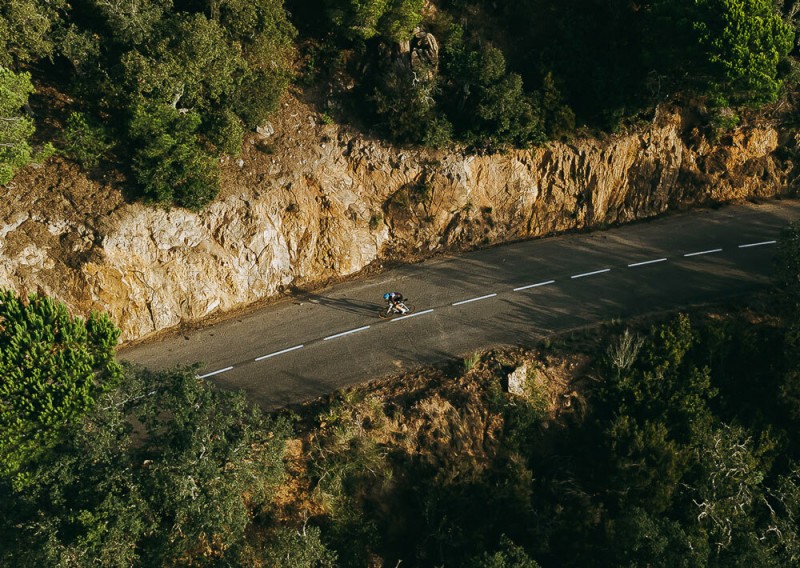The thing that truly sets carbon fiber bicycles apart from their metal cousins is the ability to manipulate the material in a way that yields inconsistent flex characteristics dependent on the direction of force. If I’ve already lost you, sorry…. this Tech Tuesday is going to get granular. But that’s what you’re here for, right? I’m sure the kids are quietly doing their schoolwork and you’ve already got most of the cooking for the day prepped and ready to fire, so why not do a deep dive into the physics of composite bicycles?!
Carbon fiber components, from a layup standpoint, are made in two different ways. One, resembling metal, is done where each layer of carbon lies perpendicular to the layer below. Or, the individual strands can be woven together at a 45 degree angle. A component made in this manner yields a part with uniform flex characteristics regardless of the direction force is applied. The flex characteristics of the carbon component are isotropic, or the same in every direction. A carbon tube made in this way will behave just like a steel or titanium tube, flexing consistently regardless of the direction of force.

Uni-Directional Carbon Fiber rolls at zero degrees F.
Carbon starts to set itself apart when the angle bias between the strands of carbon is something other than 45 degrees, creating an anisotropic structure. Anisotropic structures flex differently depending on the direction of force. When the angle bias between the layers of fiber is changed to something other than 45 degrees, flexural strength is increased when force is applied in one direction, and decreased when applied from another.
The vast majority of carbon fiber bicycles are now made using uni-directional, pre-impregnated carbon fiber. Unidirectional means that all the strands of carbon on a single sheet, or layer, are going in the same direction. Pre-impregnated means that the carbon sheet has already been saturated with epoxy resin catalyzed by an increase in temperature. Our carbon, or prepreg for short, is stored in a big freezer at zero degrees F to keep the resin from curing.

Layup pattern.
Stay with me here… our bicycle parts are made using individual layers if unidirectional carbon fiber built layer by layer over a rigid mandrel, or slightly shrunken version of the finished part. The layers are cut in specific, pre-determined shapes that, when assembled and cured in a mold, yield a part strong enough to endure the forces exuded yet flexible enough to work in concert with the other parts of the frame.
The shapes of the individual pieces of carbon sheet is referred to as the layup pattern. The layup pattern comes as a result of the most important part of a carbon fiber bicycle’s design, the layup schedule, which is the cross sectional angle orientation of the individual fibers. For example, there are nine layers of carbon in one version of our down tube. Each layer is cut out of a unidirectional sheet of carbon at a different angle, and laid on the mandrel in a specific order. The order and orientation of the fibers is the layup schedule. The corresponding shapes of the individual plies is the layup pattern.
Autometrix plotter that cuts the patterns.
The layup schedule is the key factor that determines the flex profile of a frame section, and the ability to tune this flex profile in an anisotropic manner is where carbon excels relative to its metal brethren. The term “vertical compliance, horizontal stiffness” is nearly a cliche in carbon bicycle advertising copy, but that phrase actually describes what carbon fiber bicycle frames can do fairly well. By carefully engineering the layers of fiber within the frame it is possible to build a bicycle that is very stiff when forces are applied in one direction, yet fairly flexible when applied from a different direction.

Each ply gets a number for the layup schedule.
The down tube section of a bicycle frame carries the most impact on ride quality. We look at the flex characteristics of the down tube from three different directions: vertical, horizontal, and torsional. Vertical stresses are acted out by the weight of the rider, and horizontal and torsional stresses are acted out by the pedaling force of the rider. Every Argonaut is made with a custom layup schedule, and subsequent pattern. We design the down tube, and every other part of the bike, with a layup schedule and corresponding pattern so that the bike is sufficiently stiff to propel itself forward under rigorous pedaling forces, yet also suck up bumps and road vibration for a comfortable ride. Engineering the carbon fibers within the frame in this manner is the only way to successfully tune the ride quality specific to the owner.
Individual carbon plys. Note the different angles of the uni-directional carbon.
Long story short, making a carbon fiber bicycle frame with a deliberate, specific layup schedule throughout is a giant undertaking, and creating custom layup schedules (AND patterns!) even more so. But, it’s totally worth it. The juice is absolutely worth the squeeze. No other way is it possible to make a bicycle with this kind of ride quality. That is, a bike that is an absolute joy to ride.
Thanks for reading.




